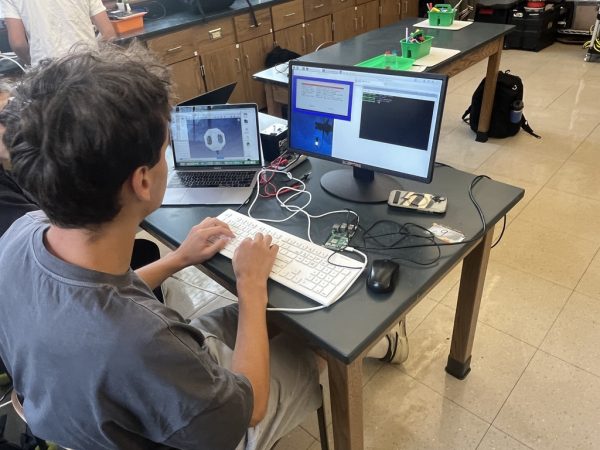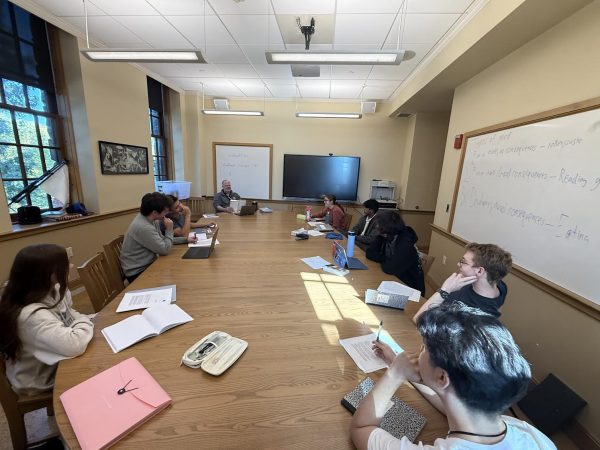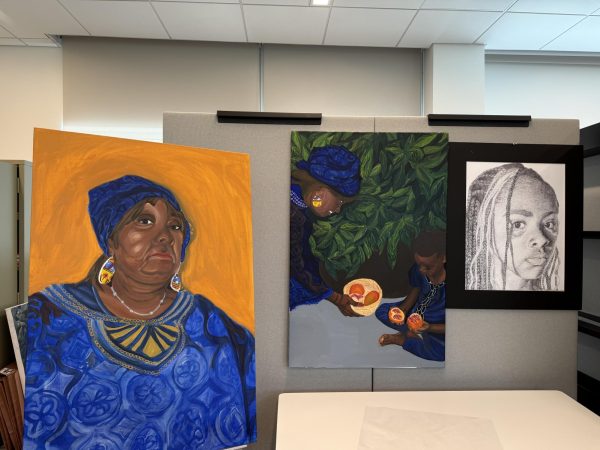Virtual learning continues to help contain COVID-19
With families in the Hackley community becoming more and more cautious, virtual learning is becoming a more popular option. Virtual learning is safe and convenient for students who have been contact traced or experiencing COVID-19 symptoms. However, mental health and the quality of learning while not being at school must be taken into consideration when weighing out the pros and cons of distance learning. There is a trade-off between being safe with rising COVID-19 cases in the Hackley community and students and faculty’s mental health all the while keeping the same high quality of learning that Hackley has always ensured.
Sophomore, Liam Abraham, said that he is much happier in person because he can see his friends and peers in class.
“With virtual learning, I get sad and less motivated to do schoolwork,” he said.
He misses his friends, and fellow students because during free periods and classes students are always very social, gathering in a socially distant way in the freshman hallway, sophomore bubble, junior hallway, or senior lounge. The loss of these fun times with friends is commonly missed while being online, and that takes a toll on mental health. The aspect of mental health needs to be taken into consideration when deciding whether to transition school to virtual for that week.
On the other hand, sophomore Zara Yusaf enjoys online learning more than Liam does.
“I get more sleep, which makes me happier for the school day,” Zara said.
The amount of time students spend sleeping has been shown to have a correlation with mood in teenagers, shown by this article. When Zara gets more sleep, she feels better rested and ready to face the day, which is one upside of being able to wake up a much smaller time before starting school.
According to the CDC, symptoms of depression and anxiety in teenagers have more than doubled since the pandemic started, increasing from 11% to 25%. Teens are hardwired to be social, and without school to interact with their peers, that opportunity is taken away. Worries about getting sick, schoolwork, and missing their friends are making teenagers more anxious and causing depression symptoms in many.
Another worry about online learning is the quality of it. According to Liam, “I feel less obligated to pay attention in class because I’m not learning as much.” It’s obvious that it is a lot harder to learn lessons without being actively engaged in person, without tools such as the ability to discuss a topic quickly with the person sitting next to you, instead of having to try and understand [by] yourself. Zara agrees with Liam, saying that “Although I am happier online, it’s definitely easier to learn in person.” There are always breakout rooms, but those are often used for big discussions instead of the helpful small ones. That’s just one example, with other casualties from virtual learning including books to help enforce a topic, and whiteboards where students can collaborate on ideas with. A common thought among students is that virtual learning is less like an engaging lesson, and more like a video that they are assigned to watch.
With spring break around the corner and a virtual learning week after it, students will need to prepare to get back into the routine of online learning. Whether they like it or not, virtual learning is doing so much to keep us all safe, and with Hackley’s low incidence of cases, it has proven that it does work.





